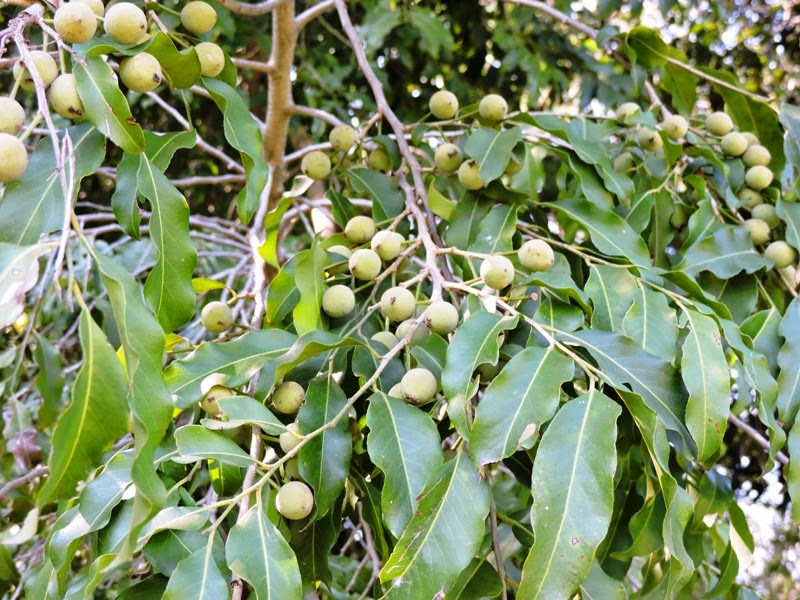Vernacular
names:
Hindi & Sanskrit names: पुत्रजीव, पुत्रजीवः, जीवपुत्रक, पुत्रजीवी, पुत्रंजीवः, जियापुत, पुतिजिया
Bengali: Putarjeeva, Jiaputa
Kannada: Putrajiva, Amani
Marathi: Putojan, Jewanputar
Telgu: Putrajivika, Kudrajivi
Kannada: Putrajiva, Amani
Marathi: Putojan, Jewanputar
Telgu: Putrajivika, Kudrajivi
Botanical
name: Putranjiva roxburghii
Botanical
name, Putranjiva roxburghii given by Wallich in 1826, is inspired from the Hindi and Sanskrit names (Putranjiva= Putarjiya + roxburghii= Dr. William Roxburgh, the father
of Indian Botany).
Distribution: India, Pakistan, Bangladesh, Nepal, Sri Lanka, Indochina, Malaysia, Indonesia, New Guinea.
Flowering Branch
BOTANICAL DESCRIPTION
The children's life tree is a medium sized tree reaching a height of nearly 20m. The branches are generally pendent and the branchlets are brown, thin, and pubescent. Leaves are simple, alternate, stipulate, petiolate, dark green, shining and coriaceous. Leaf lamina is 3.5-12 cm x 1.5-4.5 cm and elliptic-oblong. Leaf margin is serrate or serrulate. Flowers are unisexual, small and pale yellow. Male flowers are sessile, arranged in axillary spikes and 2-2.5 mm in size. Female flowers are solitary or in groups of 2 or 3, axillary and puberulous. Fruit is a drupe measuring 1.3-2 cm x 1.5 cm, ovoid-ellipsoid and white tomentose.
Fruits
USES
Sacred Uses:
The
hard seeds of this plant are strung into necklaces that are put around the necks
of young children. It is considered to ward off evil spirits and ill health.
Hindu Saints use to wear necklaces and rosaries made from its seeds. The children's life tree is worshiped by Hindu women wishing to give birth to a child. Watt, G. (1885-1893) has described many of its folk uses in his book
"Dictionary of the Economic Products of India" published by the Government of India.
Putrajeevak Seeds Mala
(Photo courtesy: Astrodevam.com)
Medicinal Uses:
The seeds of children's life tree are considered to have rejuvenative and restorative properties for the
female reproductive system and their overall health. Decoction of the leaves and
seeds is given in colds. It is also considered to have analgesic, antipyretic
and anti-inflammatory activities. The seeds are considered beneficial for liver problems, irregular menstruation, rheumatic problems and allergic skin rashes.
Other Uses:
Wood
is used for house building, agricultural implements and tool handles. Leaves
are lopped for fodder. Seeds yield a fatty oil used for burning.
More than 100 years old children's life tree growing in Vadodara
(Photograph courtesy: Dr. Jitendra Gavali Ji)






